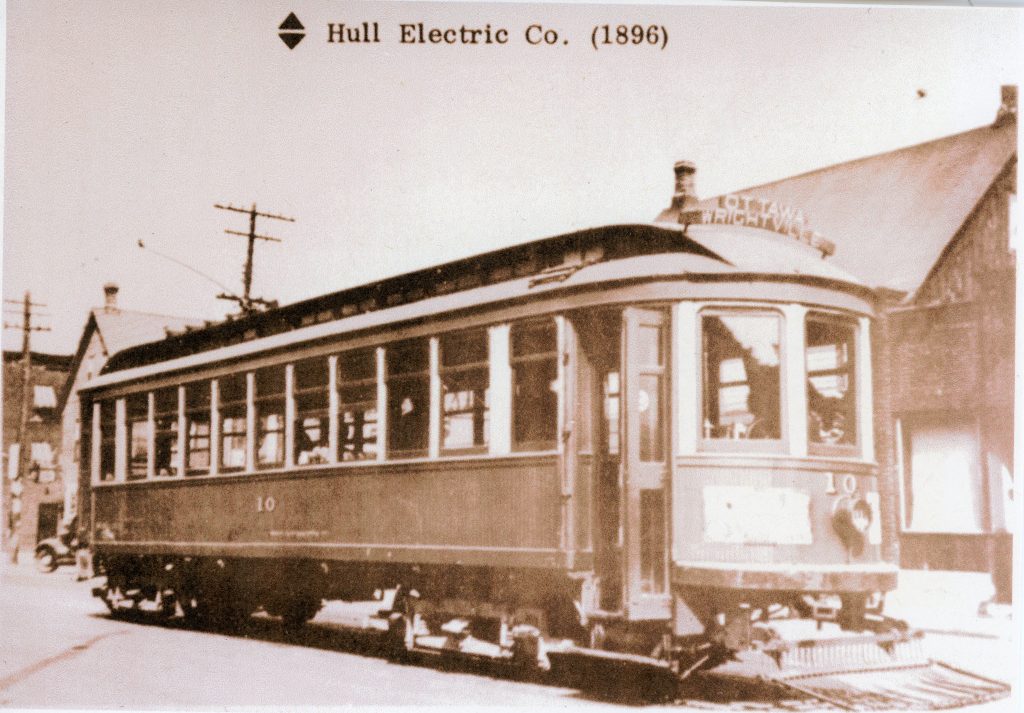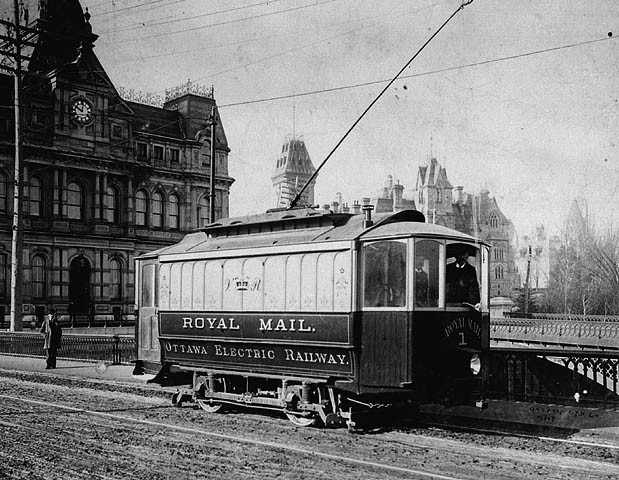From then to now
Over the years, this mode of transportation has evolved significantly. Today’s trams are a far cry from those of the past. Overview of the history of the Outaouais’ tram.
For more than 10 years, the Société de transport de l’Outaouais (STO) and its partners have been studying the prospect of a dedicated and sustainable public transit system to improve the mobility of residents between Gatineau’s west end and the Gatineau and Ottawa downtowns from a metropolitan perspective.
Taking into account the new demographic reality of Gatineau’s west end and the expected transportation needs, a complementary study identified the tram as the optimal solution.
Over the years, this mode of transportation has evolved significantly. Today’s trams are a far cry from those of the past.
Overview of the history of the Outaouais’ tram.
The Hull Electric Company
The very first trams appeared in Ottawa in 1891. At the time, they provided a shuttle service between Ottawa’s Lowertown and Hull. In Ottawa, the service ran along St. Patrick Street in Lowertown, to Sparks Street, then crossed the Chaudière Bridge to Hull, and finally returned to Ottawa.
In the meantime, in 1894, a group of businessmen—Théophile Viau, Jacques-P. de Martigny, Stanislas Aubry, Alexandre Bourgeau and Charles-L. de Martigny—submitted a tram project to Hull Municipal Council, seeking to connect Hull, Aylmer, Pointe-Gatineau and Ironside.

They were focused on generating electricity for lighting and heating, and to ultimately compete with Ottawa by setting up their own tram service. On January 12, 1895, the Hull Electric Company saw the light of day.
In 1896, the company upgraded the hydro plant at the Deschênes Rapids to power a line between Ottawa and rue Principale (then Main Street) in Aylmer. The plant not only powered the vehicles but also served as the hangar and maintenance garage.
By the time the facilities were up and running, the Hull Electric Company had close to a dozen electric trams running along four circuits in Hull and Aylmer, powered by the one plant.

From Gatineau to Ottawa
On July 12, 1901, the very first of the Hull Electric Company trams crossed the border between Hull and Ottawa after receiving permission to use the new Alexandra railway bridge.
In 1907, the company’s ambitions led to the purchase of Thomas Ritchie’s vacant lot. This became the site of the future sub-station number 4, which would house the equipment needed to keep the trains running: two generators, a control panel, four transformers, posts, cables and all the accessories for the traction system

Tramways, à proximité du pont des Chaudières [Entre 1896 et 1962]. Ville de Gatineau, fonds du Bureau du greffier de la Ville de Hull, H005-01/0147
The disappearance of the trams
City buses, the first of which started running in Hull on December 1, 1946, replaced the Hull Electric streetcars, courtesy of the Hull Urban Transportation Company created by Louis Bisson. Between 1940 and 1950, another challenge appeared to the electric streetcars: the growing popularity of the automobile. At a time when the individual was king, it became the queen of transportation. Capitulating to the pressures exerted by manufacturers like General Motors and Ford, cities chose to invest in roads, despite the high costs involved. The last tram in Hull ran on November 30, 1946. In Ottawa, the trams survived until May 1, 1959.
A new tram era
Back in those days, the full measure of the advantages of electrifying transportation was not yet fully appreciated.
Times have changed, as has the regional reality of urban transportation. These days, a tram between Gatineau’s west end and the Gatineau and Ottawa downtowns is essential if we are going to be able to handle the movement of people projected over the next 50 years. This is the time to transform the nature of transportation and mobility in our metropolitan area, to prepare for the coming decades, and to reap the tram’s environmental, economic and social benefits.

We are now entering the new tram era: more modern, and at the leading edge of technological innovations. With trams that are more comfortable, run more frequently and year-round, we have a winning combination for meeting the demand for transportation in Gatineau’s west end. With a capacity of at least 300 passengers, a tram will fit right into Gatineau’s urban fabric and help reduce traffic congestion. It will become an invaluable ally in achieving the ambitious GHG reduction targets set by all levels of government.
How remarkable is that? Trams will once again crisscross the roads of the region, for the greater benefit of the population.
Sources :
- Bistro 1908, Canadian Museum of History
- La disparition des tramways, Le Droit
- Quand Hull et Aylmer avaient leur tramway, Le Droit
- La petite histoire des tramways entre Hull et la Basse-ville
- L’ancien tramway du boulevard Saint-Joseph refait surface, Radio-Canada
- Ancien dépôt de tramways, Réseau patrimoine
Who can view this page?
This content is intended for the public covered by the exceptions of the Charter of the French language and its regulations. If you read on, you confirm that you fall within one of these exceptions.
